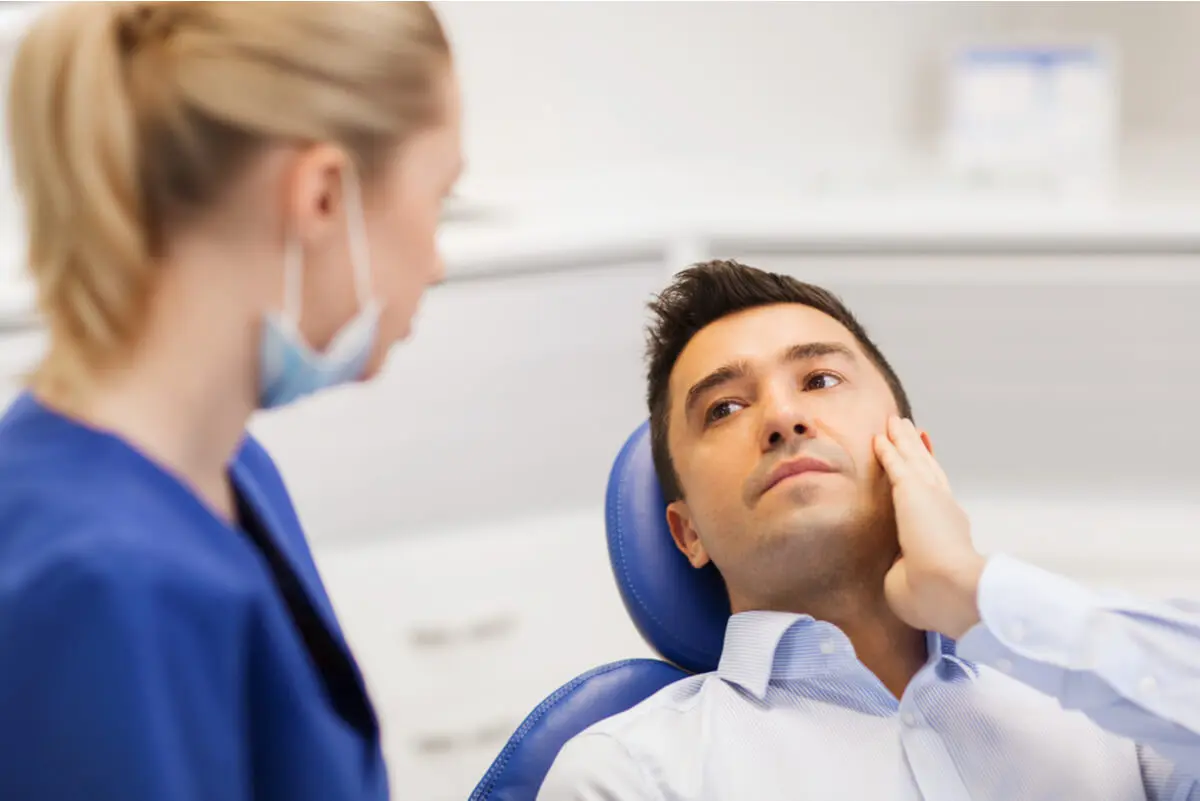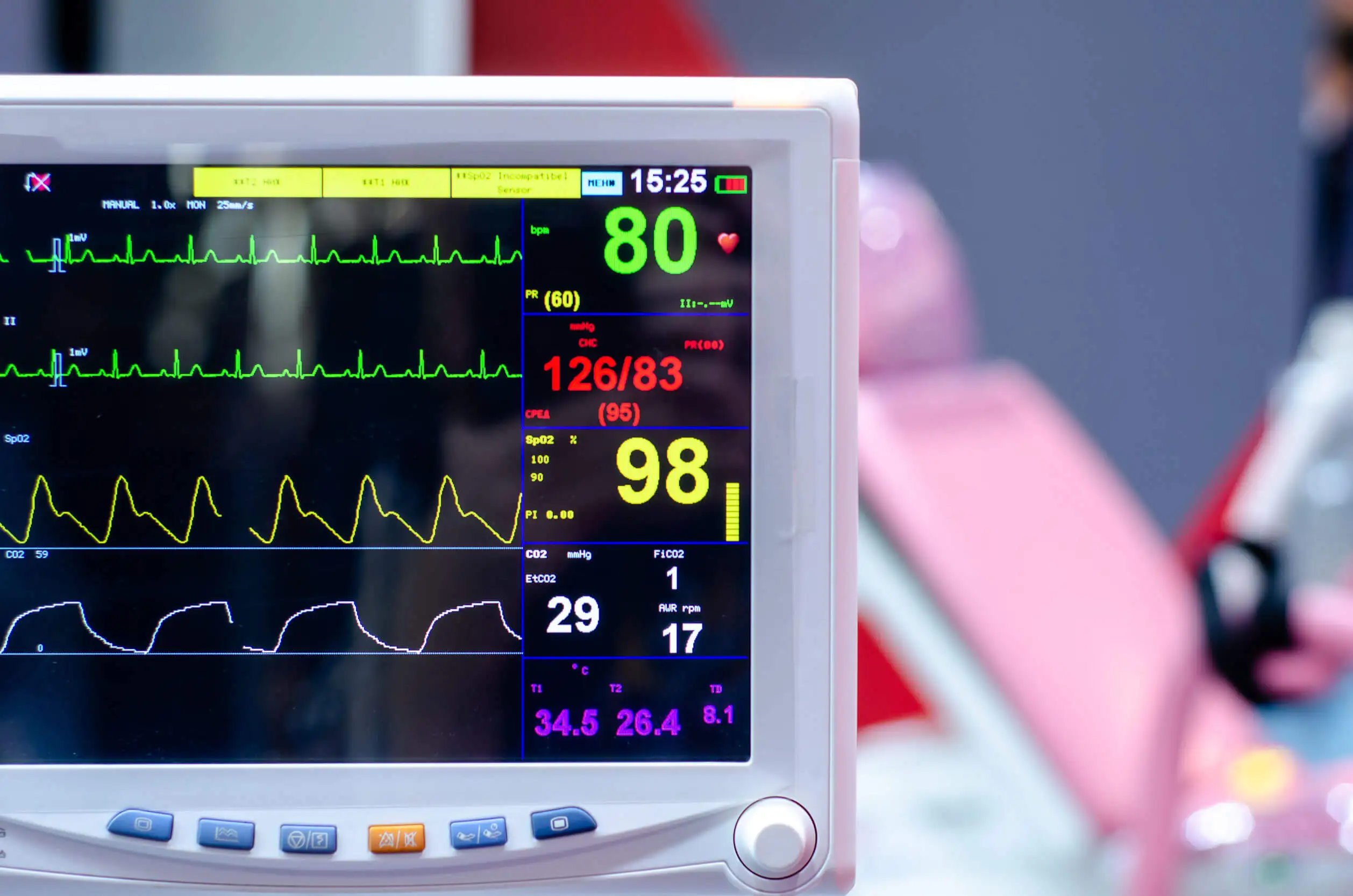Conscious Sedation in Dentistry: Applications and Advantages


Written and verified by the dentist Vanesa Evangelina Buffa
Fear of the dentist is one of the reasons that leads people to avoid dental visits, postpone treatments and neglect their mouths. To counteract feelings of fear or discomfort, conscious sedation in dentistry can be used.
Many people don’t go for regular dental check-ups due to fear. By doing so, dentists are unable to detect problems in their early stages.
When they go to the clinic, because pain or the inability to use their mouth normally forces them to seek help, the pathologies are usually very advanced. In these stages of the lesions, the treatments to restore health are much more complex, long, uncomfortable, and expensive.
To avoid reaching these extremes, patients can resort to conscious sedation in dentistry. We’ll tell you everything you need to know about this procedure that allows for more pleasant and less uncomfortable experiences when visiting the dentist.
What is conscious sedation in dentistry?
Conscious sedation used in dentistry is a technique that consists of applying certain drugs to the patient to make them relax. It is used in people who feel a high level of fear, stress, and anxiety when they have to go to the dentist.
As the name suggests, this type of sedation allows the person to remain conscious while undergoing dental treatment. However, they’ll be relaxed, and will feel calm and worry-free during the appointment.
Being awake, the patient can respond to the different stimuli and requests of the dentist, collaborating when necessary. However, their reflexes will be diminished and they’ll feel a state of numbness and relaxation.
In addition, conscious sedation used in dentistry has the particularity of producing a certain amnesia. This causes the person to have minimal memories of the intervention that was performed.
On the other hand, it also reduces involuntary movements during treatment. In this way, it facilitates and speeds up the dentist’s work.
Thus, the benefit isn’t only for the patient, but also for the dentist, who can work more comfortably. Its use does not cause significant changes in cardiac or respiratory functions.
What’s the difference between conscious sedation and anesthesia?
In the field of dentistry there are many procedures that help patients feel no pain and feel more comfortable during treatment. It’s important not to confuse conscious sedation with other ways of achieving comfort and relaxation in dental clinics.
Local anesthesia is one of the procedures that’s used commonly in dental procedures and that we must differentiate from conscious sedation. This technique achieves the temporary loss of pain and sensitivity of the area of the body where it’s placed.
It’s the classic injection that the dentist gives to desensitize the area of the mouth that he’s going to work on. In this way, fillings, endodontics, extractions, and other surgery can be performed without the patient feeling pain.
Conscious sedation, on the other hand, consists of calming and providing comfort to the person while the treatment is being performed. Since the objectives pursued by these two techniques are different, they’re used in a complementary manner: the dentist applies sedation to calm the patient and anesthesia to prevent pain.

Discover more here: 5 Ways to Prepare for Your Next Dental Visit
How is conscious sedation in dentistry applied?
Different medications can be used to achieve patient relaxation and comfort during dental care. Depending on the duration of the treatment, the patient’s characteristics, and the level of anxiety, the best option is chosen for each case.
One of the most commonly used drugs is triazolam. It’s a benzodiazepine that begins to take effect 15 minutes after its application and reaches its peak of effectiveness after 60 minutes. This drug produces anterograde amnesia, which makes the patient not remember what happens before and during the intervention.
Other drugs used to achieve conscious sedation in dentistry are diazepam, lorazepam, midazolam and propofol. Depending on the case, a single drug or several in combination will be used.
The medication can be administered orally or intravenously. Both are safe and achieve the same effects.
Oral conscious sedation
The medication enters the body by swallowing the sedative drug in the form of a tablet. In some cases, it’s preferable to place the tablet under the tongue, without swallowing it, so that it’s absorbed sublingually.
This type of administration has the advantage of achieving the expected effects more quickly than the digestive route.
Administering conscious sedation orally has the advantage of avoiding injections and not requiring the presence of an anesthesiologist. This makes the process simpler, more comfortable, and cheaper for the patient.
In opposition, the oral route is characterized by not having an immediate effect, so there must be a waiting time prior to the intervention. In addition, the dose can’t be modified during the process.
Intravenous conscious sedation
This technique uses sedative drugs, inoculating them into the body intravenously, i.e. injecting them directly into the circulation. This makes it a procedure with immediate effects.
It requires the presence of an anesthesiologist to administer and control the depth of sedation. This allows the dose to be adjusted and other types of medication to be administered, according to the patient’s needs and the requirements of the treatment.
This technique is more expensive compared to the oral route.
What are the advantages of conscious sedation in dentistry?
Fear of the dentist can lead people to postpone their dental check-ups and only go to the professional when pain or discomfort forces them to do so. Lack of attention deteriorates oral health and predisposes these patients to require complicated, long, and costly treatment.
Going to the dentist full of fear means the patient is in a state of constant tension and alertness. In this case, not only is it an unpleasant situation for them, but they also increase the risk of moving during treatment because of their nervousness, thus causing unwanted complications.
Conscious sedation in dentistry helps fearful patients to relax and feel calm during dental consultations. It also provides other benefits, such as the following:
- Decreasing anxiety and fear.
- Providing security during treatments.
- Allowing a better recovery and postoperative experience.
- Reducing stressful and negative memories of the intervention.
- Improving dental experiences, and reducing the likelihood of them rejecting future practices.
- Grouping several interventions in the same work session.
- Preventing the fatigue of long treatment, helping the dentist to solve complicated situations in a single appointment.
- Facilitating collaboration during treatment, speeding up the procedures to be carried out by the professional.
- In cases in which the anesthesiologist is involved, it increases the patient’s safety during the treatment, thanks to its monitoring.
In which dental treatments is conscious sedation used?
Conscious sedation in dentistry is used in people who have a high degree of anxiety and fear before going to the dentist. No matter how simple the procedure to be performed, for some patients it can be a very stressful and nervous situation.
In addition, some treatment in themselves can cause feelings of fear. For these cases, conscious sedation is an aid that allows you to face the problem and receive the necessary dental care.
In general, the use of conscious sedation is recommended in the following situations:
- Complex treatments, such as surgeries to place implants or extractions of wisdom teeth.
- Patients with a disability that prevents them from relaxing or collaborating with the dentist.
- Long interventions, which will be prolonged in time.
- People with odontophobia or fear of the dentist.
- Anyone who wishes to have a better experience.
Prepared clinics
When performing conscious sedation in dentistry, dental clinics must have certain characteristics that provide safety to the patient. Although the oral technique is simpler, it’s good to have specialized professionals to preserve the health of the person.
The offices that offer this type of service must have the equipment to monitor vital signs, a pulse oximeter to measure oxygen saturation, and a sphygmomanometer to measure blood pressure. In addition, the provision of a constant flow of oxygen with nasal goggles, resuscitation equipment with semiautomatic defibrillator, and intravenous medication for resuscitation is required.
In addition to the facilities, the appropriate experts must be available to carry out this type of intervention. As we have told you, if intravenous conscious sedation is used, the presence of an anesthesiologist is essential throughout the dental treatment.
Prerequisites
Conscious sedation can be used in both adults and children. First of all, it’s important to perform a patient assessment to determine if the patient is suitable to receive this type of procedure.
Assessing the patient’s general health, medication used on a regular basis, and considering consultation with the primary care physician are steps that help to decide if sedation is possible. Some complementary tests will also be required, such as an electrocardiogram or a laboratory to analyze coagulation.
The dentist or anesthesiologist, depending on the case, will analyze this information. If sedation is possible, the treatment is planned. At the time of the procedure, the patient should be monitored at all times.

What is the postoperative period like?
Once the dental procedure under sedation is completed, the patient will remain conscious, and able to stand and walk in confined spaces. His or her blood pressure and respiratory function will remain unchanged.
However, recovery will take time and there are some aspects to consider. It is recommended that the patient be accompanied by someone in the hours following the procedure and that they don’t drive for 24 hours.
Conscious sedation in pediatric dentistry
Conscious sedation in dentistry can be applied to both adult patients and children. In the latter case, the procedure helps children to have more pleasant dental experiences and avoids fears in the future.
With pharmacological sedation, the intensity of pain perception is reduced. Anxiety and fear are suppressed, making children cooperate during the interventions and develop a pleasant memory of dental visits.
The child usually remains relaxed for a period of 2 or 3 hours, which is used to perform all the necessary interventions in his mouth in a single session. As with adults, the child must be monitored by an anesthesiologist throughout the procedure.
In 2019, the American Academy of Pediatrics (AAP) and the American Academy of Pediatric Dentistry (AAPD) published new guidelines for safely administering sedation or anesthesia to children. Dentists performing dental treatment on infants under deep sedation should abide by these guidelines to ensure the safety of their patients.
Sedation in pediatric dentistry is useful when children are very restless, fearful, uncooperative, have special needs, or require many complicated or lengthy procedures.
Discover more: Dental Apicoectomy: What Is It and What Are Its Benefits?
Conscious sedation in dentistry is an option to consider
Conscious sedation in dentistry is a quick procedure. In exchange, it provides a sense of well-being and peace of mind throughout the entire procedure.
It’s true that the assessment and preliminary studies are required, and there’s the need to be accompanied to the consultation. But the other aspects of dental treatment will be the same as in a regular appointment.
Now you know the benefits of conscious sedation in dentistry. If you usually go to dental appointments with fear or anxiety, you can count on this procedure for your next appointments.
All cited sources were thoroughly reviewed by our team to ensure their quality, reliability, currency, and validity. The bibliography of this article was considered reliable and of academic or scientific accuracy.
- Álvarez Herrera, T. A., & Gutiérrez Ortiz, T. C. (2018). Recomendaciones para el uso de la sedación consciente en procedimientos odontológicos del 2005 al 2017. Revisión sistemática.
- Mora Parra, J. E. (2022). Sedacción en odontología. Una revisión bibliográfica.
- Coté, C. J., Wilson, S., American Academy of Pediatrics, & American Academy of Pediatric Dentistry. (2019). Guidelines for monitoring and management of pediatric patients before, during, and after sedation for diagnostic and therapeutic procedures. Pediatrics, 143(6).
- Velasquez Vasquez, F. R. (2018). Sedación consciente en odontología pediátrica.
- Guerrero Ortiz, F., Sanchis Fores, C., Onrubia Fuertes, X., & Aspiazu Hinostroza, K. (2020). Sedación consciente, inhalatoria y farmacológica, su efectividad en la reconducción de la conducta del paciente pediátrico en la consulta dental: estudio observacional de corte transversal. Avances en Odontoestomatología, 36(4), 180-185.
- Vivanco Morales, M. G. (2019). Técnica de sedación consciente para disminuir el temor y la ansiedad en pacientes odontopediátricos (Bachelor’s thesis, Universidad Nacional de Chimborazo, 2019).
- Nese, J. P. C., Luzardo, C. F., & Arismendi, C. (2016). Sedación consciente: una alternativa en el manejo del dolor y la ansiedad en Odontología. Actas Odontológicas, 2(1), 15-24.
- Álvarez, A. M., & Álvarez, M. (2006). Sedación oral: fundamentos clínicos para su aplicación en odontología. Revista CES Odontología, 19(2), 61-73.
This text is provided for informational purposes only and does not replace consultation with a professional. If in doubt, consult your specialist.








